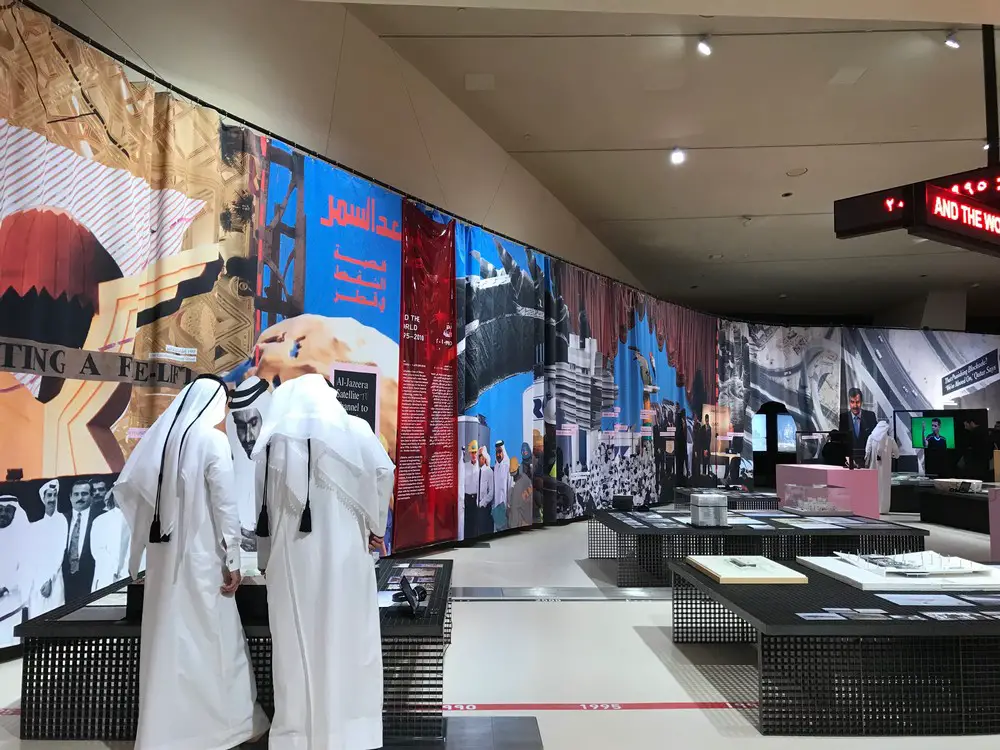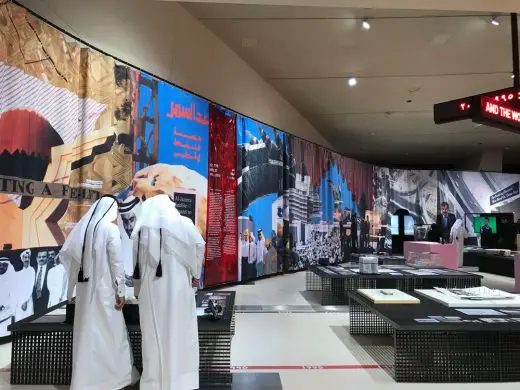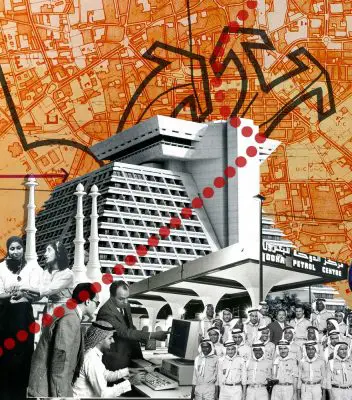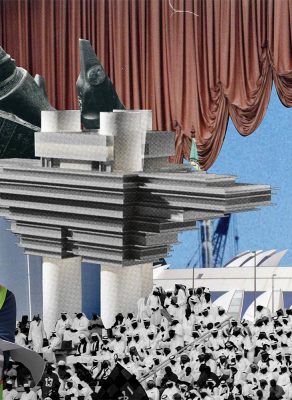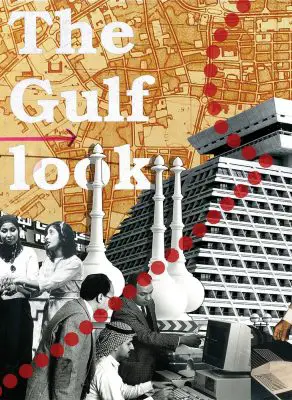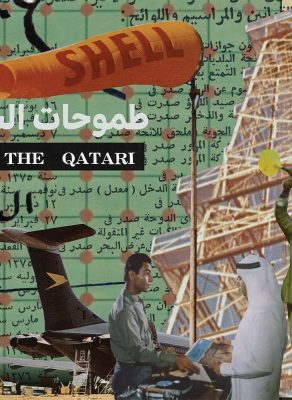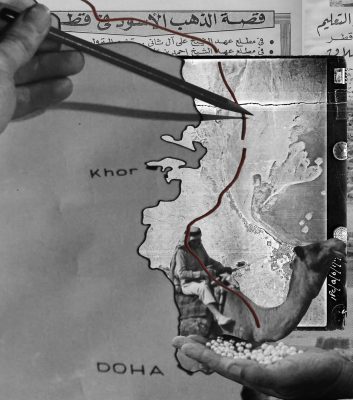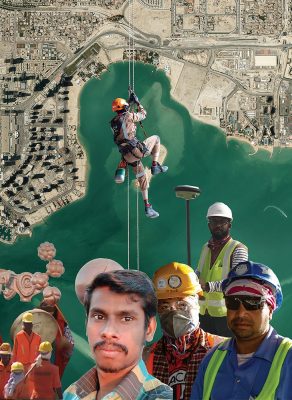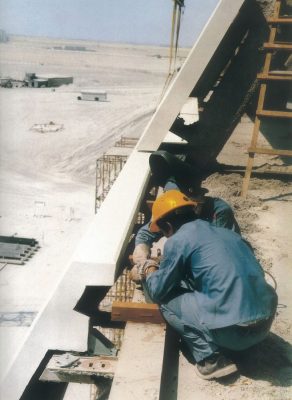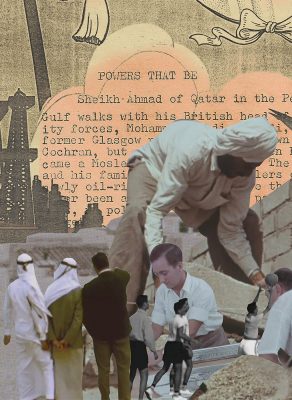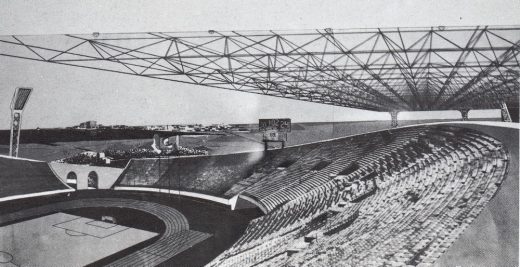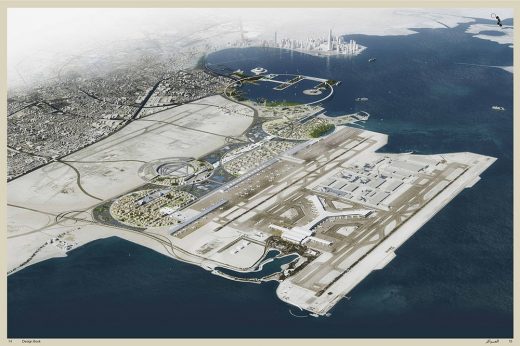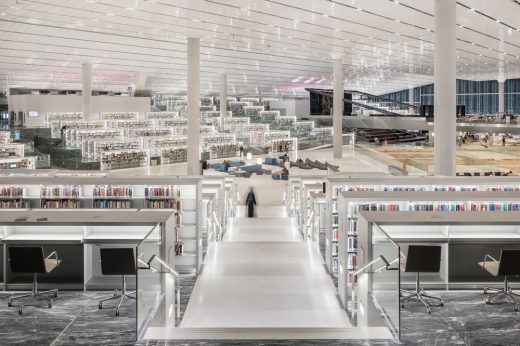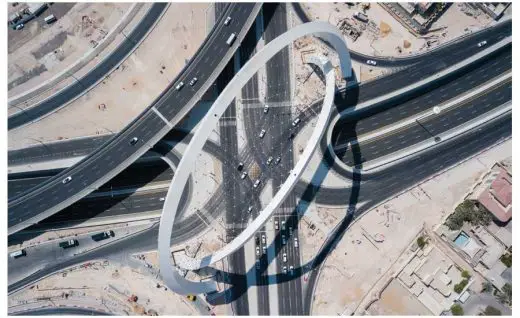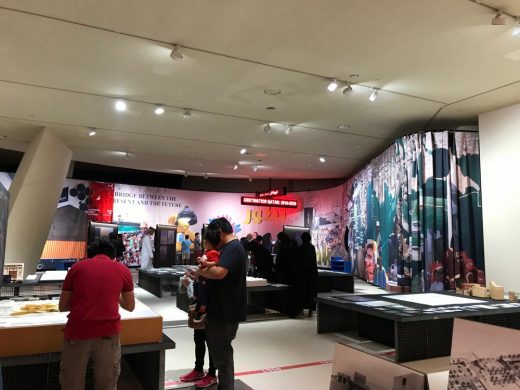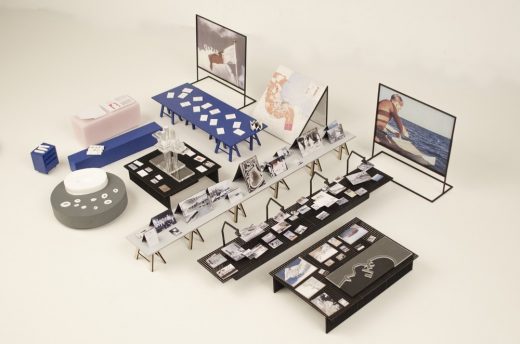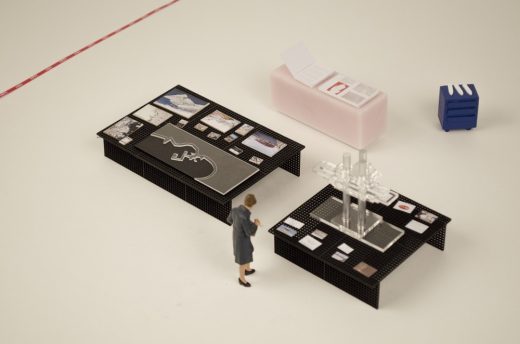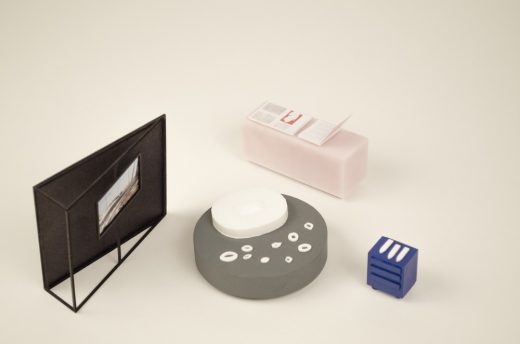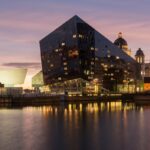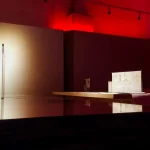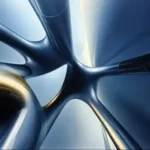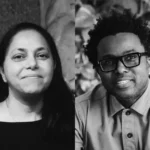Making Doha Exhibition, Weastern Asia Architecture Show, Qatar architectural images, Persian Gulf gallery news
Making Doha Exhibition in Qatar by OMA/AMO
1950-2030: Public Architecture Show in Weastern Asia design by OMA/AMO
2 Apr 2019
Architects: OMA/AMO
Location: Doha, Qatar
Making Doha is on view at the National Museum of Qatar from 28 March to 30 August 2019.
Photos by OMA
Making Doha 1950-2030 Exhibition in Qatar
To inaugurate its temporary exhibition gallery, the new National Museum of Qatar presents an exploration of the ongoing urban and architectural development of the capital city, Making Doha 1950-2030, on view from 28 March through 30 August 2019.
Curated by Rem Koolhaas and Samir Bantal of OMA/AMO and Fatma Al Sehlawi and the Qatar based research team from Atlas Bookstore, and designed by a team from OMA/AMO, Making Doha 1950-2030 brings together seventy years of photographs, models, plans, texts, films, oral histories, and archival materials to chart Doha’s transition from organic growth to more modern and deliberate planning practices. This exhibition examines how the city of Doha was assembled and how its construction affected the global discipline of architecture across four major chapters: Seeds of a Nation (1950–1971), Modern State (1971–1995), And the World (1995–2010), and Destination Qatar (2010–2030).
The floorplan of the exhibition is designed as a timeline, organizing the story into four sections, with key moments punctuating the visitors’ passage along the narrative. A 115-meter-long curtain printed with historical collages lines the edge of the space.
Commenting on the opening, Sheikha Reem Al Thani, Director of Exhibitions at Qatar Museums said: “This ambitious new temporary exhibition is a powerful articulation of the development of our modern State, and the perfect addition to a comprehensive and vibrant programme that marks the official opening of the new National Museum of Qatar. With this architectural exhibition, the curatorial team has illustrated how progressive and humanistic principles can be translated into state-led urban developments.
Rem Koolhaas: “Typically a learning curve eventually flattens out. By relentlessly placing tremendous challenges before itself—a major airport, the World Cup, the Olympics, new cultural institutions like Qatar Museums and Education City—Qatar put itself in a situation where the curve constantly became steeper.”
Samir Bantal: “The exhibition shows the evolution of Doha as a test site of modern architecture and urban planning. Four zones represent the periods of leadership, its visions and collaborations, while a central spine collects governmental ambitions through time. A large collection of images and models demonstrates a first attempt of collecting Doha’s impressive architectural resume.”
Fatma Al Sehlawi: “Through this exhibition the Atlas Bookstore research team has accelerated its efforts to documenting the urban and architectural formation of the city. We are now able to tell a story of a metropolis put together with care, in which the past has not been erased, and the present is a functioning, livable, whole. We believe this is very much the first stage of a greater project aiming to record the city’s physical growth, and we now anticipate the participation of visitors to enrich this archival collection.”
Making Doha 1950-2030 has been organized under the supervision of Sheikha Reem Al Thani, Director of Exhibitions at Qatar Museums, and Sheikha Amna bint Abulaziz bin Khalifa Al Thani, Director of the National Museum of Qatar. The research team from Atlas Bookstore that developed the exhibition content was Marsya Abdulghani, Nasser Al Armadi, Fatima Al Hajri, Majid Al Remaihi, Alanood Al Thani, Rawda Al Thani, Ahmed Alony, and Markus Elblaus. The AMO design team was Valentin Bansac, Samir Bantal, Yotam Ben-Hur, Sebastian Bernardy, Rem Koolhaas, Annie Schneider and Aleksandr Zinovev.
“Why did Doha escape the fate of the generic, which applied to almost every other city that emerged out of ‘nowhere’ in the last quarter of the 20th century? Our ‘age’, when cities were no longer the outcome of political, ideological, or aesthetic principles but were by ‘definition’ left to the forces of the market.
Doha was different. From the early seventies, a sequence of informed rulers engaged intimately in a complex process of modernisation. Social and political ambitions were pursued in direct connection with the building of the city itself. Doha is the record of their successive priorities.
From 1916 to 1971 Qatar was a British protectorate. In fifties English propaganda, Qatar is systematically presented as ‘a place where there was nothing…’, suddenly transformed by the discovery of oil, which then enabled the insertion of the launching elements of the modern age such as infrastructure—the airport, hospitals, schools, stadiums, and ministries, which allowed the creation of a proto-functionalist urban condition.
In reality the more drastic change was that from a traditional mentality to a contemporary mindset, triggered by Qatar’s independence in 1971. Beginning with HH Sheikh Ali Bin Abdullah Al Thani, the leadership of the new state was able to present this transformation as a collective adventure.
Among the local population it found the agents, often educated abroad, who were able to channel the fluid and oral procedures of Arab tradition over time into a coherent framework of stable terms as the foundation of a municipal bureaucracy that could begin to ‘plan’, an entirely new concept in a culture used to organic growth. Typically a learning curve eventually flattens out. By relentlessly placing tremendous challenges before itself—a major airport, the World Cup, the Olympics, new cultural institutions like Qatar Museums, and Education City—Qatar put itself in a situation where the curve constantly became steeper.
What is most striking in Qatar’s priorities is the insight that education comes before everything else and how that same insight shaped both the population and the city. Through this commitment, local intelligence could be mobilised to handle the increasingly complex and demanding issues of planning and construction. The near absence of the commercial developer in Doha’s shaping meant that most building is a response to specific needs and ambitions instead of the approximation of speculative demand.
After putting in place the conditions of planning, Qatar was lucky in the choice of architect/architectural thinking it invited, from the rich diversity of global movements of the seventies and eighties. Qatar offered opportunities and was able to collaborate with a wide range of both Western and non-Western architects who responded passionately to the opportunity of contributing to the identity of a new country.
Later in the 21st century, (star) architects responded gratefully to opportunities for seriousness and relevance that were quickly disappearing from the market-driven territories of the rest of the world.
It is ironic that the average critic has not captured the emergence of Qatar’s unique condition. Still referring routinely to the ‘nothingness’ of Qatar’s beginnings, they have not yet deciphered the values that are manifest here.” By Rem Koolhaas
Photography: OMA
Qatar National Library in Doha images / information received 020419
OMA led by architect Rem Koolhaas
Location: Doha, Qatar
Qatar Architecture
Qatari Architectural Projects
Qatar Architecture Designs – chronological list
Qatar National Library, Doha
Architects: OMA
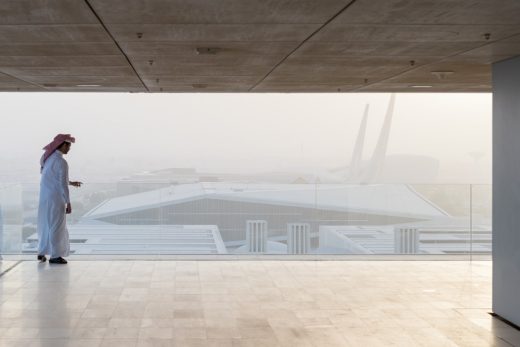
photo © Iwan Baan
Qatar National Library Building in Doha
Qatar Faculty of Islamic Studies, Doha
Architects: MYAA
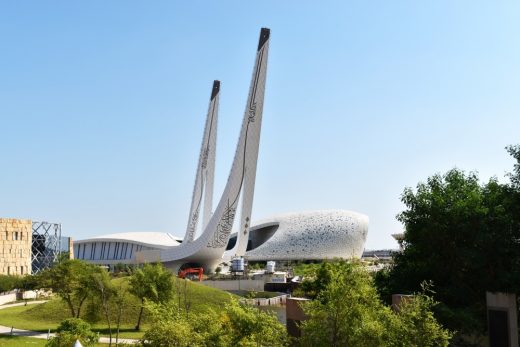
image courtesy of MYAA
Qatar Faculty of Islamic Studies in Doha
Oxygen Park at Education City, Doha
Architects: AECOM
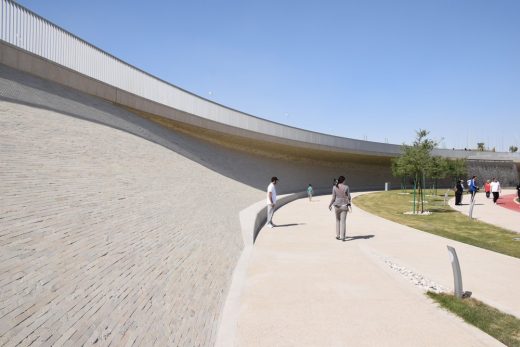
photo : Markus Elblaus
Oxygen Park, Education City, Doha
National Museum of Qatar Building
Architects: Jean Nouvel
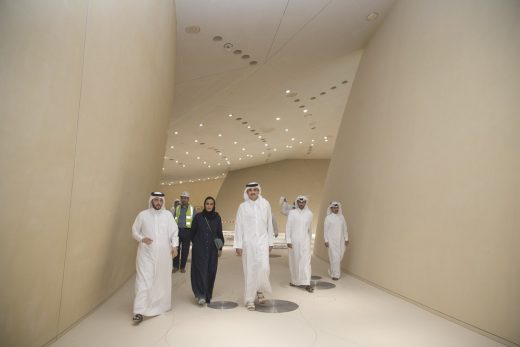
photograph Courtesy of Qatar Museums
National Museum of Qatar
Al Jazeera’s Headquarter, Doha
Architects: Veech X Veech
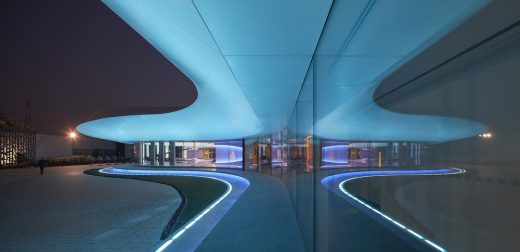
photo © Hufton + Crow
Al Jazeera’s Headquarters Building Doha
Museum Islamic Art Park by Architect: I M Pei
Website: Oxygen Park, Education City
Buildings / photos for the Qatar National Library in Doha design by OMA page welcome

